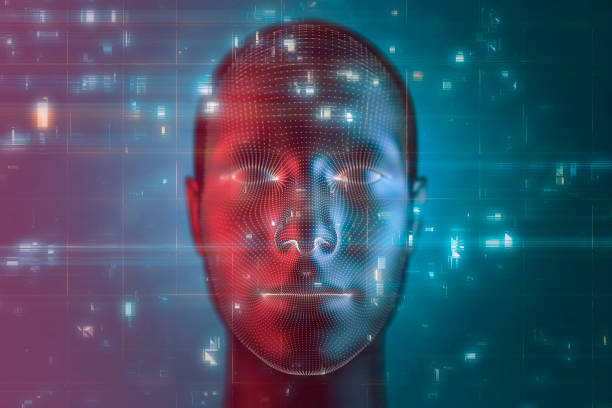Artificial intelligence (AI) is rapidly transforming various aspects of our lives, and its integration into technology is no exception. One of the most groundbreaking developments within this sphere is the emergence of self-learning operating systems (OS) that utilize machine learning algorithms to enhance efficiency, security, and functionality. As industries increasingly rely on AI-driven solutions, the potential impact of self-learning operating systems on financial institutions is profound and far-reaching.
.
**Understanding Self-learning Operating Systems**
Self-learning operating systems are advanced computing platforms that adapt and optimize their performance through continuous learning from users, systems, and environmental data. Unlike traditional operating systems that require manual updates and configurations, self-learning operating systems harness the power of AI to autonomously improve their functionalities over time. This ability to learn and adapt not only streamlines system operations but also enhances security and responsiveness to potential threats.
.
Self-learning OS can analyze vast amounts of data, recognize patterns, and predict possible outcomes, making them invaluable in high-stakes environments such as financial institutions. As financial transactions and activities grow increasingly complex, the demand for smarter systems that can cope with these intricacies is greater than ever.
.
**AIOS for Financial Institutions: Revolutionizing the Banking Sector**
Financial institutions are among the first industries to recognize the advantages offered by AI-driven technologies, especially with self-learning operating systems (AIOS). By incorporating AIOS, banks and other financial entities can optimize routine operations, enhance customer experiences, and improve decision-making processes.
.
One major application of AIOS in finance is in fraud detection and risk management. Traditional systems often rely on heuristic-based algorithms that can be slow to adapt to evolving tactics used by fraudsters. On the contrary, AIOS leverages machine learning to analyze transaction data in real-time, identifying anomalies and flagging suspicious activities swiftly and accurately. This allows for a significant reduction in financial loss and enhances customer trust.
.
Additionally, AIOS can streamline customer service operations through automation and personalized user experiences. Chatbots and virtual assistants, powered by AI, can engage with customers 24/7, addressing queries, processing transactions, and offering personalized product recommendations based on customer behavior and preferences. This not only improves operational efficiency but also fosters strong customer loyalty.
.
**AI-driven OS Virtualization: Enhancing IT Infrastructure**
The incorporation of self-learning operating systems and virtualization through AI is revolutionizing IT infrastructure in financial institutions. AI-driven OS virtualization allows organizations to create multiple virtual instances of operating systems on a single physical server, enhancing resource management and scalability.
.
With AIOS, virtualization becomes even smarter. These systems can automatically optimize resource allocation based on real-time analysis of workloads. For example, during peak hours, AIOS can allocate more resources to high-traffic applications, while during off-peak hours, it can reallocate resources to maintain cost efficiency. This dynamic responsiveness reduces downtime and increases overall system productivity.
.
Moreover, AI-driven OS virtualization allows for more robust disaster recovery strategies. In the event of system failure or disaster, AIOS can quickly assess the situation and restore services based on predefined parameters, minimizing potential disruptions in services. This becomes particularly crucial for financial institutions where uptime is non-negotiable.
.
**Technical Insights: The Engines Behind Self-learning Operating Systems**
Self-learning operating systems are powered by several key technologies that enable their autonomous decision-making capabilities. Machine learning algorithms, specifically supervised and unsupervised learning, allow these systems to analyze data, detect anomalies, and improve their performance over time.
.
Neural networks, especially deep learning models, play a significant role in this architecture, enabling the system to understand complex patterns and relationships in vast datasets. With natural language processing (NLP), self-learning OS can even interpret human language, making them essential tools for customer service applications in financial institutions.
.
Furthermore, the integration of AI algorithms with existing digital infrastructures allows for seamless transitioning to AIOS without the need for complete overhauls. These systems can coexist with traditional operating systems, supporting a gradual shift towards AI-driven operations.
.
**Industry Use Case: A Real-world Example of AIOS Implementation in Finance**
One notable example of an AIOS in action is Capital One, a major financial institution that has integrated machine learning throughout its entire operational model. Capital One employs AI algorithms to enhance customer experience through personalized offers while utilizing self-learning systems to detect fraud in real-time.
.
By incorporating a self-learning OS, Capital One has improved its ability to understand customer behavior, allowing the bank to offer tailored banking products based on individual preferences and spending habits. Moreover, through its AIOS, the bank conducts continuous monitoring of transactions, promptly identifying fraudulent behaviors and alerting customers, thus reducing the impact of fraud.
.
Another example comes from JPMorgan Chase, which has utilized AI to automate and streamline various back-office operations. The bank’s proprietary AI drone, COiN, analyzes thousands of contracts in mere seconds, which previously took analysts hours to review. This not only increases efficiency but also allows the workforce to focus on more strategic tasks.
.
**Challenges and Considerations in Implementing AIOS**
While the advantages of self-learning operating systems are undeniable, financial institutions must also consider the associated challenges. The integration of AIOS requires significant investment in technology and infrastructure, as well as ongoing training and development for staff.
.
Moreover, ethical considerations surrounding data privacy and security must be paramount in the financial sector. Financial institutions are obligated to protect sensitive customer information and must ensure that AIOS adhere to strict regulatory standards. This necessitates robust governance frameworks and compliance checks as part of the AIOS implementation process.
.
Additionally, reliance on AIOS and automation may lead to potential job displacement within the sector. While AI can enhance efficiency, organizations must strike a balance between technology and human input to maintain a skilled workforce and mitigate resistance to change.
.
**Conclusion: Embracing the Future with Self-learning Operating Systems**
As financial institutions continue to navigate the complexities of the modern banking landscape, the need for innovative solutions becomes increasingly critical. Self-learning operating systems are at the forefront of this revolution, offering enhanced risk management, improved customer engagement, and robust operational efficiency.
.
By embracing AIOS and AI-driven OS virtualization, financial institutions can not only improve their service offerings but also secure a competitive edge in an industry that is evolving at lightning speed. The future of banking lies in technological integration and the willingness to adapt—a journey that will undoubtedly reshape the way we perceive and interact with financial services.
.
**Sources**
1. Kaplan, J. (2023). “The Role of Artificial Intelligence in Finance: Opportunities and Challenges.” Forbes Advisor.
2. Brown, T. (2023). “How AI is Transforming the Banking Sector.” Deloitte Insights.
3. Jennifer, L. (2023). “AI and the Future of Bank Security: A Deep Dive into Fraud Prevention.” Wall Street Journal.
4. “Self-Learning Operating Systems: The Next Frontier in Cloud Computing.” (2023). IEEE Computer Society.
In conclusion, the implementation of self-learning operating systems, particularly in the banking and finance sector, represents a significant technological advancement that has the potential to redefine operational paradigms. As organizations adapt to these systems, the future of finance looks brighter, more efficient, and intuitive.






















